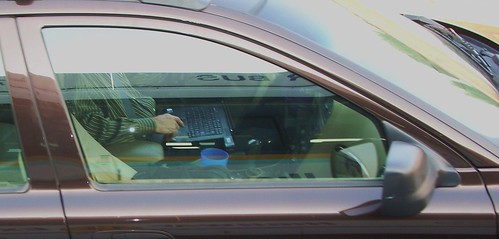That’s the take home message in this news from Science Daily, which highlights research showing that the more cyclists there are on the road, the safer it becomes.  Motorists change their behavior and driver more safely when they see more cyclists and pedestrians on the road around them.
Motorists change their behavior and driver more safely when they see more cyclists and pedestrians on the road around them.
Experts say the effect is independent of improvements in cycling-friendly laws such as lower speed limits and better infrastructure, such as bike paths. Research has revealed the safety-in-numbers impact for cyclists in Australia, Denmark, the Netherlands, 14 European countries and 68 Californian cities.
“It’s a positive effect but some people are surprised that injury rates don’t go up at the same rate of increases in cycling,” says Sydney University’s Dr Chris Rissel, co-author of a 2008 research report on cycling.
“It appears that motorists adjust their behaviour in the presence of increasing numbers of people bicycling because they expect or experience more people cycling. Also, rising cycling rates mean motorists are more likely to be cyclists, and therefore be more conscious of, and sympathetic towards, cyclists.”
 Lloyd at Treehugger goes into more detail on the safety aspect, pointing to Bike Commute Tips where Paul writes, “Amen to this. Stop perpetuating the myth of bicycling as a dangerous activity. Leave your helmet at home.”
Lloyd at Treehugger goes into more detail on the safety aspect, pointing to Bike Commute Tips where Paul writes, “Amen to this. Stop perpetuating the myth of bicycling as a dangerous activity. Leave your helmet at home.”
Copenhagenize highlights this part of the article:
Dr Rissel says transport authorities should highlight the fun, convenience and health and environmental benefits of cycling, rather than what he views as an undue emphasis on danger and safety messages, which can deter cyclists: “We should create a cycling friendly environment and accentuate cycling’s positives rather than stress negatives with ‘safety campaigns’ that focus on cyclists without addressing drivers and road conditions. Reminding people of injury rates and risks, to wear helmets and reflective visible clothes has the unintended effect of reinforcing fears of cycling which discourages people from cycling.”
Other responses:
- Carbon Trace in Springfield: In Springfield the number of bikers on the road (and every other available surface) has increased dramatically in the past three weeks because college students are back in town. And I’ve noticed less honking and other cranky behavior by motorists.
- Amsterdamize: We already knew this, but hey, let’s keep science right smack in the middle of the ‘discussion’ and spread the word, ok?
Images: Catalog photos from Velorbis and Specialized. Guess which is from which?
